
History of the Franklin Delano Roosevelt Memorial
Franklin Delano Roosevelt (1882-1945) guided the nation through the most difficult years of the twentieth century. First elected president in 1932, he tackled the Great Depression in his first two terms in office and, in his third, marshaled Allied forces to defeat the Axis powers in World War II. He died in April 1945, shortly into his fourth term.
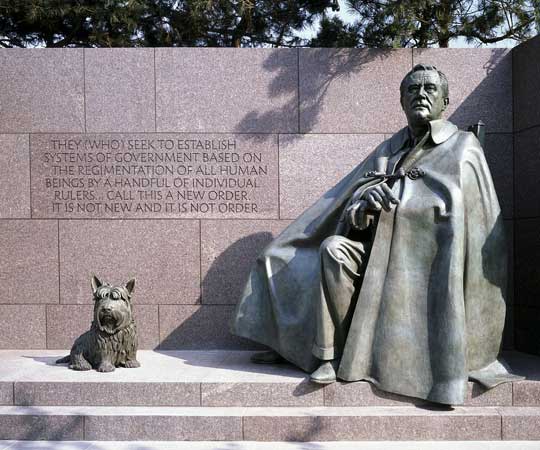
Franklin Delano Roosevelt (FDR) and his Scottish Terrier, Fala, by sculptor Neil Estern, of Brooklyn, New York. Credit: Library of Congress, Carol M. Highsmith Archive.
The Franklin Delano Roosevelt Memorial stretches 800 feet along the south side of the Tidal Basin and covers about 7-1/2 acres. The memorial narrates the story of Roosevelt's 12 years in office with granite walls, sculpture, waterfalls, and inscriptions, arranged in four rooms corresponding to the four terms of his presidency. It is a pleasant place to visit as well, with six waterfalls, carefully chosen plantings, and beautiful views of the Tidal Basin and the Washington Monument. There are nine bronze sculptures by five American artists: Leonard Baskin, Neil Estern, Robert Graham, Tom Hardy, and George Segal. The memorial itself was designed by Lawrence Halprin, a landscape architect from California.
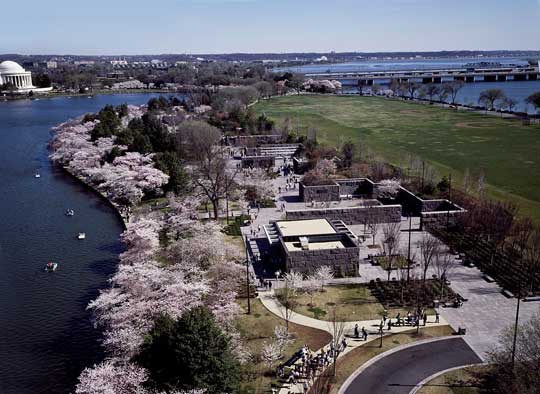
The FDR Memorial, located on the Tidal Basin in Washington, D.C., is organized into four outdoor rooms, one for each of his four terms in office. Credit: Library of Congress, Carol M. Highsmith Archive.
The memorial was realized only after a gestation period of more than five decades. The Franklin Delano Roosevelt Memorial Commission was first authorized by Congress in 1946, but was not formed until 1955. The commission selected the Tidal Basin site in 1957 and held the first design competition in 1960. The winning entry had a circle of massive (up to 165 feet tall) concrete steles bearing quotations from FDR, but the commission later dropped the plan due to public objections. A second competition, held in 1966, was awarded to prominent architect Marcel Breuer for an immense granite pinwheel centered on a granite cube. Breuer's design was rejected by the Commission of Fine Arts (CFA) for a perceived lack of artistic merit.
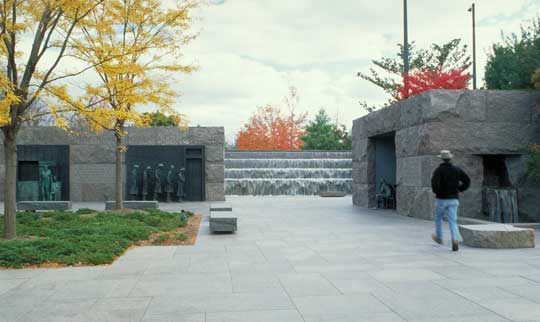
The second room is dedicated to FDR's second term in office (1937-1941), when his New Deal, an array of federal programs designed to revitalize the economy and provide relief from the Depression, went into high gear. Photograph © Peter R. Penczer.
A third competition, held in 1974, went to Halprin, whose winning design was less controversial because it harmonized with the bucolic setting along the Tidal Basin. It was approved by the CFA (after being reduced in scale), but languished for another decade because of a lack of funding. Finally, in 1989, Congress appropriated funds for the memorial's construction, and work began in 1994. It was dedicated on May 2, 1997.
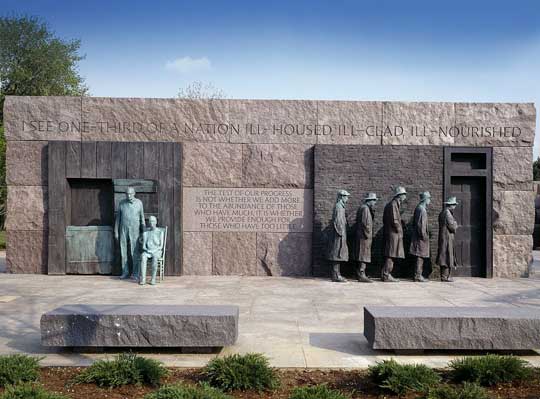
"The Rural Couple" and "The Breadline," by sculptor George Segal, of New Brunswick, New Jersey. Credit: Library of Congress, Carol M. Highsmith Archive.
The memorial soon became the subject of controversy over its depiction of Roosevelt's paralysis, the legacy of a 1921 bout with polio. During his lifetime, Roosevelt strove to hide his disability, but more recently his triumph over this handicap has made him a symbol for many disabled Americans. Under pressure from advocates for the disabled, Congress authorized the addition of a statue of FDR in a wheelchair, shortly after the memorial's completion. The new statue, the work of sculptor Robert Graham, was placed in an addition to the front of the memorial. It was unveiled in 2001.
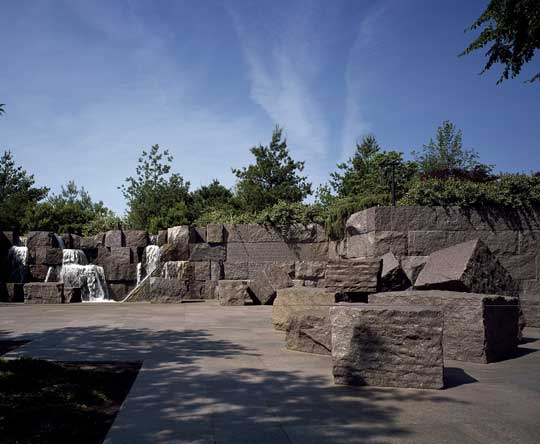
The Third-Term Room is dedicated to the years (1941-1945) when FDR led the United States against the Axis powers in World War II. The broken blocks on the right symbolize the destruction of the war. The Credit: Library of Congress, Carol M. Highsmith Archive.
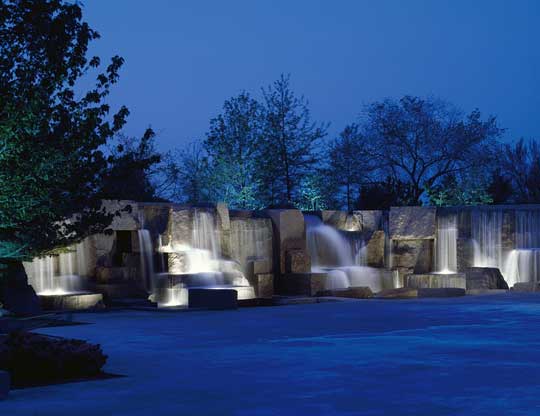
The waterfall in the Third-Term Room at night. Credit: Library of Congress, Carol M. Highsmith Archive.
Adapted with permission from The Washington National Mall, by Peter R. Penczer, Oneonta Press, Arlington, Va.: 2007.
Copyright © Peter R. Penczer 2016